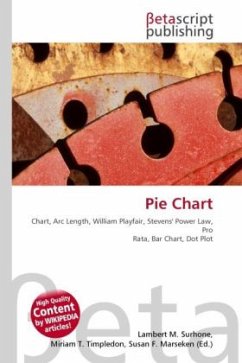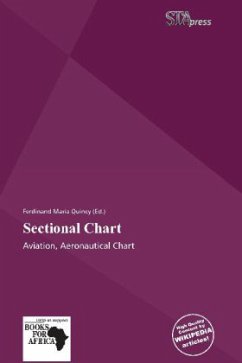
Pie Chart
Versandkostenfrei!
Versandfertig in 6-10 Tagen
23,99 €
inkl. MwSt.

PAYBACK Punkte
12 °P sammeln!
High Quality Content by WIKIPEDIA articles! A pie chart is a circular chart divided into sectors, illustrating percents. In a pie chart, the arc length of each sector is proportional to the quantity it represents. Together, the sectors create a full disk. It is named for its resemblance to a pie which has been sliced. The pie chart is perhaps the most ubiquitous statistical chart in the business world and the mass media. However, it has been criticized, and some recommend avoiding it, pointing out in particular that it is difficult to compare different sections of a given pie chart, or to comp...
High Quality Content by WIKIPEDIA articles! A pie chart is a circular chart divided into sectors, illustrating percents. In a pie chart, the arc length of each sector is proportional to the quantity it represents. Together, the sectors create a full disk. It is named for its resemblance to a pie which has been sliced. The pie chart is perhaps the most ubiquitous statistical chart in the business world and the mass media. However, it has been criticized, and some recommend avoiding it, pointing out in particular that it is difficult to compare different sections of a given pie chart, or to compare data across different pie charts. Pie charts can be an effective way of displaying information in some cases, in particular if the intent is to compare the size of a slice with the whole pie, rather than comparing the slices among them. Pie charts work particularly well when the slices represent 25 to 50% of the data, but in general, other plots such as the bar chart or the dot plot, or non-graphical methods such as tables, may be more adapted for representing certain information.












